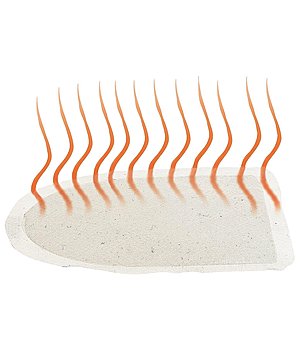
- Frequently asked questions
- How can I protect my Icelandic horse's fetlocks?
- Why can a fetlock guard be useful?
Weight Boots & Pastern Wraps
- Frequently asked questions
- How can I protect my Icelandic horse's fetlocks?
- Why can a fetlock guard be useful?
How can I protect my Icelandic horse's fetlocks?
Weight boots are a typical sight in Icelandic horse riding. They can help the horse develop a clear rhythm and are even permitted up to 250g per hoof at some gaited horse competitions. To prevent the weights from rubbing against the fetlock during movement, fetlock guards can be placed underneath.
Anyone who wants to protect the heel bulbs on their Icelandic horse from injuries caused by an overreach during training can use heel protectors. Due to their anatomical shape, these fit snugly around the heel bulbs. Alternatively, bell boots can be used, which do not enclose the heel as tightly as a heel protector. However, they can provide sufficient protection if the horse overreaches significantly and does not lift its front hooves quickly enough from the ground.
Why can a fetlock guard be useful?
A fetlock and heel protector can be useful when riding Icelandic horses, if you have a horse that overreaches significantly. When working on establishing a clear-paced gait, it may happen that the horse steps on itself if the front hooves do not move out of the way of the hind hooves quickly enough. In such cases, fetlock and heel bulb protection in the form of a fetlock boot, a heel protector or boots combined with bell boots is recommended.
Likewise, a fetlock protector can be useful when applying weight boots during training or at a competition for gaited horses. Weight boots can rub during movement and thus irritate the sensitive, thin skin around the fetlocks. A well-fitting fetlock boot protects the underlying skin.


